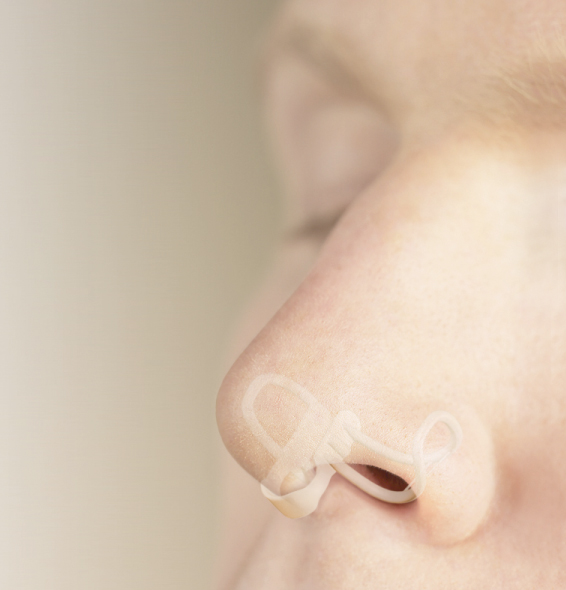Beyond providing one with a sense of smell and enhancing the sense of taste, nose breathing has other very important advantages:
WHY IS NOSE BREATHING SO IMPORTANT?
1
It is a smaller passageway, so it increases exhalation time thereby increasing the body’s relaxation response (Cappo& Holmes 1984).
2
The volume of inhalation and exhalation is much less, hence over-breathing opportunity is limited and CO2 is retained. The result — better physiology as mentioned in the previous FAQ.
3
Nose hairs filter out dust, molds and bacteria.
4
The nasal passages warm and humidify air before it travels to the lungs.
5
Nitric Oxide is stored in the nasal cavity. As the molecule of the year back in 1992, NO was shown to be a chemical messenger, sending information from nerves to cells and affecting numerous bodily functions. Like CO2, NO is a vasodilator giving rise to both increased blood flow, dilating veins, blood vessels and capillaries and smooth muscle relaxation in the bronchial airway as it opens up bronchial airways. As a smooth muscle dilator, it also allows the GI tract to operate more efficiently.
6
NO inhibits the growth of airborne bacteria, viruses, and fungi. As air is breathed through the nose, it picks up nitric oxide from the sinus passages. It is then carried to the lungs and on into the bloodstream where it plays a critical role in our internal chemistry, health and performance.

Beyond providing one with a sense of smell and enhancing the sense of taste, nose breathing has other very important advantages:
1
It is a smaller passageway, so it increases exhalation time thereby increasing the body’s relaxation response (Cappo& Holmes 1984).
2
The volume of inhalation and exhalation is much less, hence over-breathing opportunity is limited and CO2 is retained. The result — better physiology as mentioned in the previous FAQ.
3
Nose hairs filter out dust, molds and bacteria.
4
The nasal passages warm and humidify air before it travels to the lungs.
5
Nitric Oxide is stored in the nasal cavity. As the molecule of the year back in 1992, NO was shown to be a chemical messenger, sending information from nerves to cells and affecting numerous bodily functions. Like CO2, NO is a vasodilator giving rise to both increased blood flow, dilating veins, blood vessels and capillaries and smooth muscle relaxation in the bronchial airway as it opens up bronchial airways. As a smooth muscle dilator, it also allows the GI tract to operate more efficiently.
6
NO inhibits the growth of airborne bacteria, viruses, and fungi. As air is breathed through the nose, it picks up nitric oxide from the sinus passages. It is then carried to the lungs and on into the bloodstream where it plays a critical role in our internal chemistry, health and performance.

